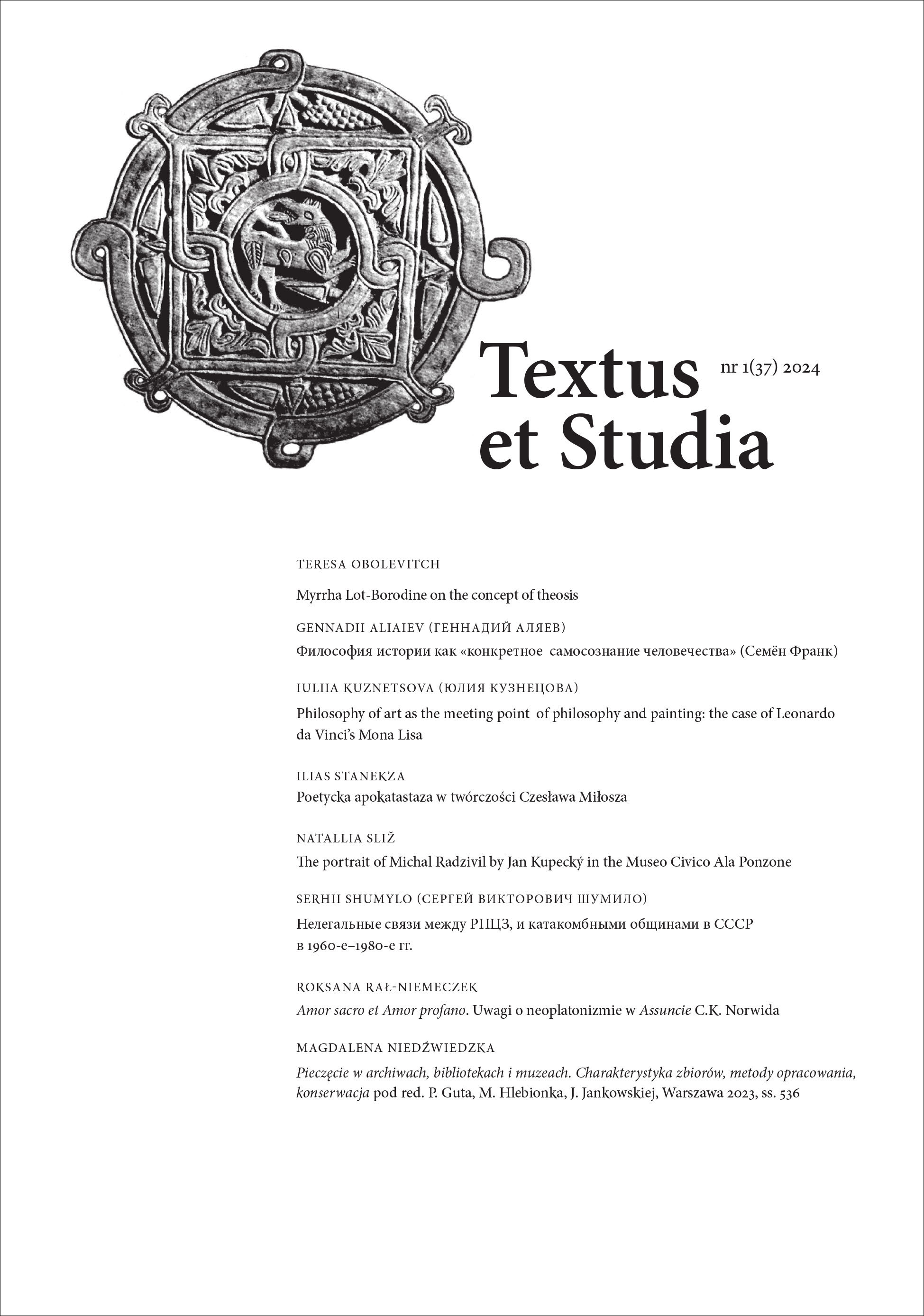Amor sacro et Amor profano. Remarks on Neoplatonism in Assunta by C.K. Norwid
DOI:
https://doi.org/10.15633/es.10107Keywords:
Assunta, Neoplatonism, Amor sacro and Amor profano, God, eschatologyAbstract
An article entitled Amor sacro et Amor profano. Remarks on Neoplatonism in “Assunta” by C.K. Norwid is a deep reflection on the presence of philosophical and eschatological findings in Norwid’s narrative poem. This literary work was published after the death of its writer, which is why its reception was undertaken quite late. The author, quoting the state of research on this text, comes to the conclusion that there is no integral or homogeneous interpretation of Assunta. This masterpiece has already been studied in the perspective of Platonism, but it has not been analyzed in the context of the findings of Marsilio Ficino or Leone Ebreo – the great creators of Christian Neoplatonism. The article describes the axiological, eschatological and epistemological associations that Norwid incorporated into the rather enigmatic plot of Assunta. Furthermore, the article attempts to analyze this poem in the terms of oppositions Neoplatonic, such as: earth–heaven, down–up, spirit–body, sacrum–profanum. The common point for these contradictions was the emphasis in the text on the presence of Amor sacro and Amor profano. The author of the article discussed the essence of neoplatonic love by means of a spatial analysis of the cross, the vertical-horizontal arrangement, as well as the theme of the heroine’s silence and her gaze at the sky, and then found and analyzed the analogies of this text with Titian’s paintings, the poetic novel Maria by Antoni Malczewski or Sielanki albo pieśni by Adrian Wieszczycki.
Downloads
Published
Issue
Section
License

This work is licensed under a Creative Commons Attribution 4.0 International License.
Authors who publish with this journal agree to the following terms:
- Authors retain the copyright and full publishing rights without restrictions, and grant the journal right of first publication with the work simultaneously licensed under a Creative Commons Attribution 4.0 International License that allows others to share the work with an acknowledgement of the work's authorship and initial publication in this journal.
- Authors are able to enter into separate, additional contractual arrangements for the non-exclusive distribution of the journal's published version of the work (e.g., post it to an institutional repository or publish it in a book), with an acknowledgement of its initial publication in this journal.
- Authors are permitted and encouraged to post their work online (e.g., in institutional repositories or on their website) prior to and during the submission process, as it can lead to productive exchanges, as well as earlier and greater citation of published work (See The Effect of Open Access).

